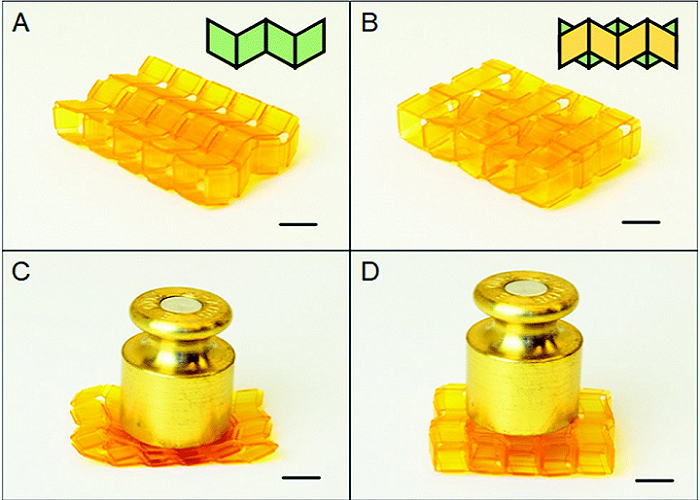A 3D printing research collaboration between Georgia Institute of Technology and China’s Peking University (Beida) has yielded transformable structures that can support up to 100 times their own weight.
A continuation of previous studies demonstrating self-assembling tensegrity structures, the results of this research is a step forward for engineering applications of origami structures.

Origami engineering principles
As pointed out by the Georgia Tech and Beida research abstract “Origami engineering principles have recently been applied to a wide range of applications, including soft robots, stretchable electronics, and mechanical metamaterials.” Chiefly, origami designs offer engineers the opportunity to fabricate a 3D part from one continuous piece of material, reducing integral weaknesses due to joints. With 4D functionality, origami designs also offer the opportunity to preprogram materials to perform a function such as drug delivery or load-bearing.
Though these functions have been proved in concept, Georgia Tech and Beida’s research sought designs that maximize the strength of 3D printed origami structures. Namely, the team succeeded in defining assemblages “with acceptable strength and load-bearing capacity for engineering applications.”
Weight-lifting polymers
The 3D printing method employed by the team is LED based Digital Light Processing (DLP). Objects in the study are made from a custom elastomeric polymer, formulated for “foldability” and “repeatability.”
The pivotal point in this study is the 3D designs the researchers create to instill engineering grade mechanical properties in the elastomer. “Our approach introduces hinge-panel elements, where the hinge regions are designed with finite thickness and length,” explain the co-authors.
“The geometrical design of these hinge-panels, informed by both experimental and theoretical analysis, provides the desired mechanical behavior.”
The result is structures that can be tuned either to fold flat or fully support a load up to 100 times its own weight.
The load-bearing capacity of the same 3D printed assembly tuned to flatten (top) or support (right) weight. Clip via Soft Matter
Further reading
The most recent results of Georgia Tech and Beida’s 4D printing collaboration, “3D printing of complex origami assemblages for reconfigurable structures,” is published online in Soft Matter journal. It is co-authored by Zeang Zhao, Xiao Kuang, Jiangtao Wu, Qiang Zhang, Glaucio H. Paulino, H. Jerry Qi and Daining Fang.
The previous study of 4D printed tensegrity structures shares three co-authors (Wu, Paulino and Qi) with the latest research compiled in collaboration with Beida.
For all the latest additive manufacturing research subscribe to the 3D Printing Industry newsletter, follow us on Twitter and like us on Facebook.
Seeking jobs in academia? Create a free profile on 3D Printing Jobs, or advertise (for free) to find expertise in your area.
Featured image shows origami assemblies tuned to be flat (left) or supportive (right) when bearing a load. Image via Soft Matter



